
Most are familiar with Charles Morgan and his Out Island 41, primarily made to cruise and charter in the Bahamas, but not many are familiar with the Out Island 36. The internet is littered with information, pictures and data of the 41, but finding information or a sailor with an OI 36 is not so easy.
I was fortunate enough to have purchased a 1973 Out Island 36 from the original owner back in 2006. I was moving up from a Grampian 26, so this boat seemed enormous. Finding this freshwater vessel was like finding a needle in a haystack. Even better, the previous owner had the original bill of sale showing all the options he chose to pay extra for. The original boat manual and engine manual were both in excellent condition. The total in US dollars was $38,500 back in 1973.
Design

The Morgan Out Island 36 was first introduced in 1973 and last produced in 1976. Designed by Charles Morgan and built by Morgan Yachts in St. Petersburg, Florida, the OI 36 had a reputation for being a solid liveaboard, providing comfort underway and at anchor. With an incapsulated full lead keel, wide beam, skeg-hung rudder, a hull speed of 7 knots, and a PHRF rating of 217, she wasn’t built to win races but rather marketed as a safe comfortable vessel with an ample center cockpit and interior space. Just like the bigger OI 41, the IO 36 was built overly strong with fiberglass. A private owner’s cabin aft of the center cockpit was icing on the cake. It didn’t connect through an offset passage to the forward saloon, but it was a distinctive feature that worked well.
Over the four years of production, the exterior of the vessel basically remained the same. A ketch model was available but was not very popular. The interior offered a few different layouts for the galley and dinette. Powering this 16,000 lb. beast was either a Westerbeke 4-107 diesel providing 37 horsepower or the Perkins 50-hp diesel engine. Either option came with a 70-gallon fuel tank. Some models appeared to have been fitted by the Atomic 4 gas engine.
The exact amount of OI 36’s produced is unclear, but it could be less that one hundred.
Deck

With the beam measuring 11.4 ft., the deck and cockpit are extremely roomy to maneuver. On the bow, holding the CQR anchor is a stock anchor roller with the manual windless being an option. The single spreader mast is keeled stepped with large spotlights on both sides. Six chainplates are bolted on the outside of the hull.
Teak handrails and teak cleats are also found on deck providing an extra hand when walking about and tying off the sheets.
The deck area is large enough to fit two bean bags to enjoy your sundowners. The stern fitted davits are a very convenient option. The mainsheet traveler is positioned on the aft coach roof keeping it out of the way.
My favorite option on this boat is the roller furlers on both the head and main sail. A very uniquely made system called “continuous drum roller” is a welcome option, especially on the main. It has never jammed or let me down. To furl or bring in the sail, you pull on the line which turns the drum. You then cleat the line at your desired position. Easy sailing! I’m not sure why other boats never adapted to this system.
The large cockpit with its high coaming keeps the guests dry and safe. The helm is very plain with no special electronics. The two Barlow 27 winches were available with the self-tailing version being an option.
Interior

The sales brochure presents the interior as spacious. I never found it so. The headroom is great aft, but walking from the galley to the V-berth is very tight. The head is to port and a wet locker to starboard. The V-berth is in fact spacious with a lot of stowage, a large hatch and four opening ports. The 39-gallon freshwater polyurethane tank is located under the V-berth.

The galley and dinette provide ample space but nowhere near the designs of newer sailboats. There are very large drawers under the settees and deep stowage compartments to port. Four closed ports provide sunlight, but not enough to brighten the dark interior. Water for the sinks is provided by a 12 V pump, and the kitchen sink also has a manual hand pump. A huge ice box can be found cooled by the 12 V power hungry cooling system.

Since OI 36s don’t have a walkthrough, the aft cabin is accessed from the cockpit. The aft cabin includes a queen size bed, private head, shower, sink, six opening ports, large hatch and locker. The 20-gallon aluminum holding tank is located inside the aft cabin locker.
The interior is decorated with holly, teak and a very dark veneer. The large hatches and opening ports allow the fresh breeze to circulate but do not provide sufficient light. The interior is very dark. Entry to the engine room is located under the cabin stairs. The engine room is a fair size but not comfortable to work in because of the hull incline. The diesel tank holds 70 gallons.
The DC panel is very plain with fuses instead of breakers. Many sailors upgraded their panel to breakers. The 6-gallon hot water tank was an option as well as the showers in both heads.
Performance
The OI 36 was certainly not built to win races or to get you to your destination quickly. You will, however, arrive safely and dry. Pointing into less than 45 degrees proves challenging but sails great on a close or beam reach. Don’t expect much in light winds. This vessel is stubborn to get moving but once she does, she cuts through the waves effortlessly, remaining stable, keeping the crew vertical.

The OI 36 is very easy to sail. She sails better with winds exceeding 12 knots. When the lighter sailboats start reefing in, you will still have full sails out on this boat.
Hitting the hull speed of 7 knots under sail has never happened. Starting up the iron beast solves that problem, but that’s not why we sail. Since I sail on Lake Huron, storms are at times very strong. I’ve survived squalls and waterspouts and must admit that the OI 36 handled them all very well. I never felt threatened or unsafe. While at anchor, she is stable and doesn’t swing much.
My performance issue and my nemesis are at the dock. Backing out of her berth in tight quarters with a 2-knot current, plus winds, makes the deed very stressful. With the full keel and you basically have no control at low speeds even with the 3-blade prop.
Construction
As with most fiberglass sailboats from the early years, the OI 36’s hull was built by doubling and tripling the guessed amount of materials necessary to avoid flexing and ensure integrity. To this day, it’s difficult to find an OI 36 with hull problems as they were near bulletproof.
The deck is bolted to the hull and covered with a very thick rubber rub rail which is attached with 5200 adhesive. The rub rail did have an issue of ungluing and needing to be replaced after several years.
The deck is fiberglass layered over plywood with areas of grazing and spidering, being normal for the age. Soft spots or delamination have seldom been reported. The chainplates are located on the outside which makes it much easier to inspect and maintain compared to those encapsulated in fiberglass found in the interior of some boats.
There is no doubt that the OI 36 was built tough for coastal cruising in comfort. The test of time proves that.

Sailboat Specifications Courtesy of Sailboatdata.com
Hull Type: Long Keel
Rigging Type: Masthead Sloop
LOA: 35.82 ft / 10.92 m
LWL: 28.00 ft / 8.53 m
S.A. (reported): 579.00 ft² / 53.79 m²
Beam: 11.42 ft / 3.48 m
Displacement: 16,000.00 lb / 7,257 kg
Ballast: 7,500.00 lb / 3,402 kg
Max Draft: 3.75 ft / 1.14 m
Construction: FG
First Built: 1973
Last Built: 1976
Builder: Morgan Yachts (USA)
Designer: Charles Morgan
Make: Universal
Model: Atomic 4
Type: Gas
Fuel: 70 gals / 265 L
Water: 39 gals / 148 L
S.A. / Displ.: 14.64
Bal. / Displ.: 46.88
Disp: / Len: 325.39
Comfort Ratio: 31.80
Capsize Screening Formula: 1.82
S#: 1.39
Hull Speed: 7.09 kn
Pounds/Inch Immersion: 1,142.54 pounds/inch
I: 43.16 ft / 13.16 m
J: 14.92 ft / 4.55 m
P: 35.50 ft / 10.82 m
E: 14.50 ft / 4.42 m
S.A. Fore: 321.97 ft² / 29.91 m²
S.A. Main: 257.38 ft² / 23.91 m²
S.A. Total (100% Fore + Main Triangles): 579.35 ft² / 53.82 m²
S.A./Displ. (calc.): 14.65
Est. Forestay Length: 45.67 ft / 13.92 m
Conclusion
If Mr. Morgan was still alive, I would want to ask him this question, “Why?” With the OI 41 being such a success, why would he build a smaller version? Did he see a demand in the market for a pocket cruiser? With less than one hundred sold, did he see this as a failure? He stopped production only a few years into the project. He also launched the OI 33 in 1973 and that version stayed in production for a few additional years. So, what issues arose with the OI 36 that made it unviable to continue production?
Overall, I only have a few complaints and can point out many positives. It all depends on what you are looking for. The OI 36 is a great gunkholing boat for the Great Lakes and excellent for the coast, even though I haven’t yet taken her there. That was the target market after all. The deep center cockpit keeps you safe at sea and in weather but also provides an enjoyable place at anchor. I must admit, I never found her to be a pretty boat when looking at her from afar. She’s missing character. She looks bulky with no pretty lines. The full enclosure adds to her defects. All that changes once you enter the cockpit and feel at home.
Bottom line. Every boat is a compromise. This was my first lesson when I started shopping for my first sailboat in 2003. I’ve learned many lessons throughout the years, but that one resonates with me and holds true.
Pros Cons
Large cockpit. Adding a full enclosure provided a whole new room Walkover (you must climb into the cockpit to get into the aft cabin)
Stable and comfortable Steep stairs (I’ve hit my knees too many times climbing up)
Easy to sail Dark and tight galley
Strong with no known structural issues Eleven seacocks to maintain
Large amount of stowage












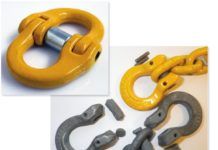

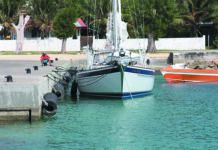







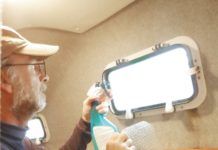





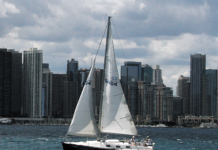

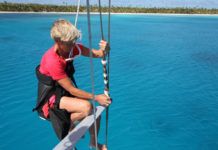






Nice boat. Are the pros and cons reversed?
Yes, Charles they are. I will get that fixed. Thank you for your compliment and sharp eye.
Not a good sailboat for the Gulf coast where you are typically dealing with light air and headwinds unless you accept it as a decent motorsailer. I worked for a Morgan dealer as teenager in the late 70’s. The OI’s are built like tanks as noted but most of the time the owners were using them as liveaboard marina queens or motoring to their destinations. Boats like the Pearson 365 and 424 were better performers, better looking, and IMO more bluewater capable.
I have one of 40 Westindies 36’s hull 3. these began production in 1976. It was specifically designed to cruise and live aboard in the west indies. I wonder if there is a design relationship between the two?
To me, the aft cockpit, shoal draft Morgan 38, draft at 3′-9″, board up, is a far prettier boat and a great sailor, with its bronze centerboard down , allowing it to be far more weatherly,